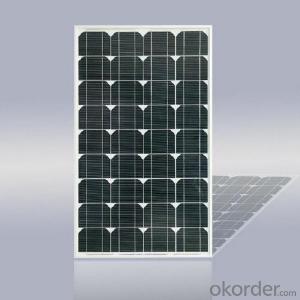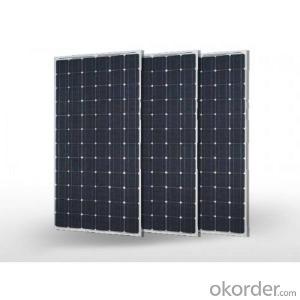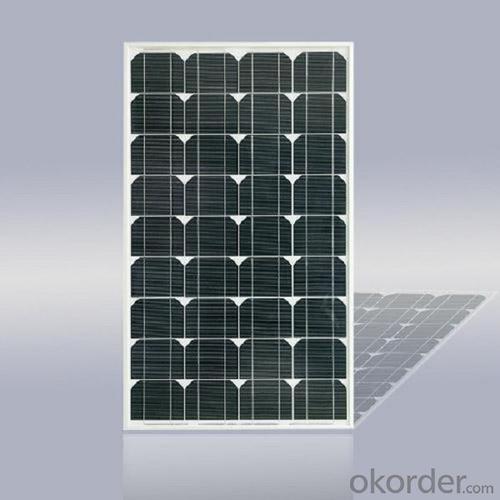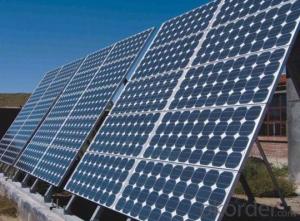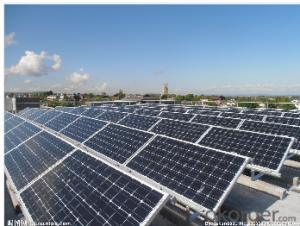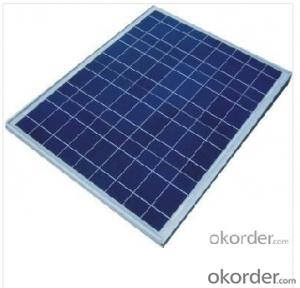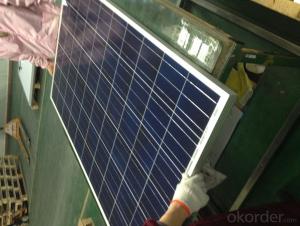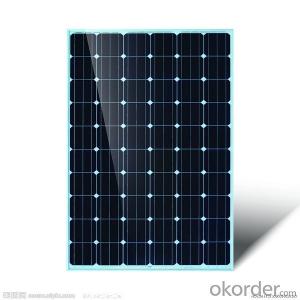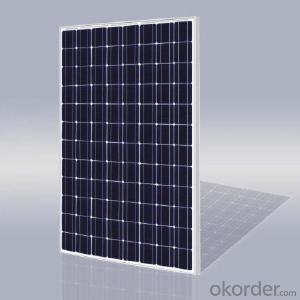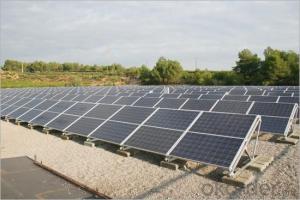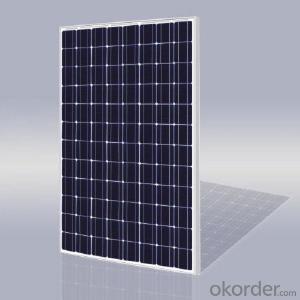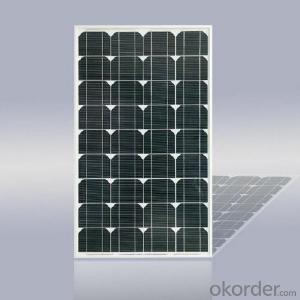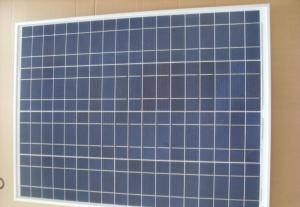Sol Solar Panels 260W - High Efficiency Solar Panels for Sale
- Loading Port:
- Shanghai
- Payment Terms:
- TT OR LC
- Min Order Qty:
- 2600 watt
- Supply Capability:
- 26000 watt/month
OKorder Service Pledge
OKorder Financial Service
You Might Also Like
Specification
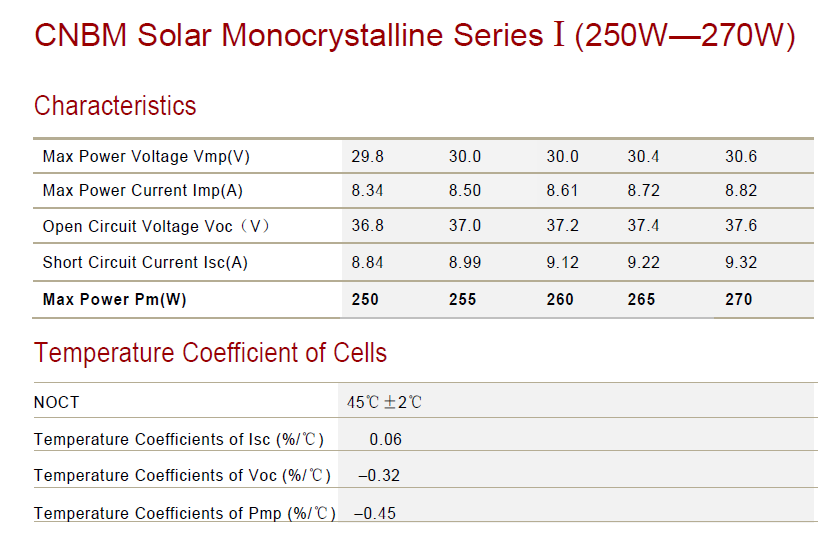
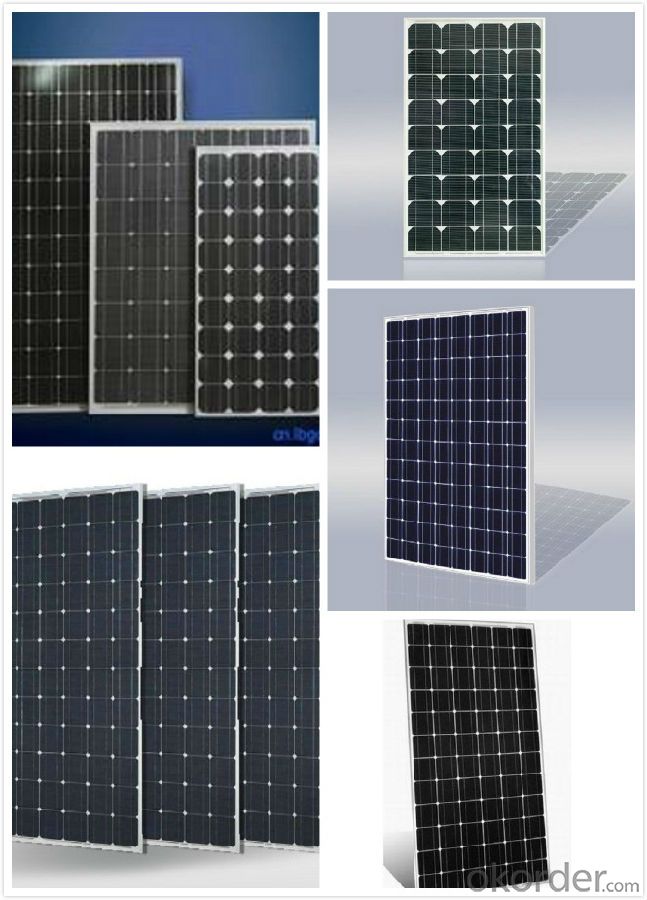
Rated maximum power (Pmax) 260W
Open circuit voltage (vOC) 37.30
Short circuit current (Isc) 8.78
Maximum power voltage (Vmp) 30.10
Maximum power current (Imp) 8.31
Cell efficiency (%) 17.50%
Max system voltage (VDC) 1000V DC
Temperature coefficient of Vm -0.241%/K
Temperature coefficient of Im +0.033%/k
Temperature coefficient of power -0.37%/K
Maximum Series Fuse Rating 15A
Solar cell and configuratiou 60pcs(6*10)in series,156*156mm monocrystalline
Junction box IP65,1000VDC,TUV certified;6 pcs Schottky By-pass diodes
Cable type & CONNECTOR 4m㎡,TUV certificated,0.9m length;MC4
Encapsulation low iron tempered glass,3.2mm thickness,light transmission above 91%;TPT and fast cure EVA
Farame clear anodized aluminum alloy,50/45mm thickness,silver
Dimension (l*W*H) 1640*990*50mm/45mm
Weight 20KG/19KG
Heavy mechanical load salient features 540Pa (ACCORDING TO ICE61215)
Hail impact test lce ball dianeter 25mm,23m/s
Operating temperature -40℃~+85 ℃
Standard test conditions: STC:AM=1.5,1000W/m2,cells temperature 25℃
Power tolerance:±3% (can be provided 0~±3%)
GENERAL INFORMATION
The installation of PV modules requires a great degree of skill and should only be performed by a qualified licensed professional, including licensed contractors and licensed electricians. Please be aware that there is a serious risk of various types of injury occurring during the installation including the risk of electric shock. All CUSTOMER modules are equipped with a permanently attached junction terminal box that will accept variety of wiring applications or with a special cable assembly for ease of installation, and they do not require assembly.
Solar panel working process
In addition to being the ultimate source of all life on earth, the sun is an infinitely renewable, completely pollution-free source of electricity. Instead of burning fossil fuels dug up from the ground in a big power plant – a very 19th century, industrial age approach, when you think about it – solar panels convert sunlight directly into electricity, with no harmful emissions.
The basic unit of a solar panel is a solar cell, which usually consists of one or two layers of silicon-based semiconductor wafers. When struck by the photons in sunlight, the solar cell generates an electrical charge due to the "photovoltaic effect" – which is a pretty good name, since it produces voltage from photons. The flow of these electrons moves in a steady electrical current from one side of the cell to the other.
- Q: What is the difference between monocrystalline and polycrystalline solar panels?
- Monocrystalline solar panels are made from a single crystal structure, typically silicon, which results in a higher efficiency and sleeker appearance. Polycrystalline solar panels, on the other hand, are made from multiple silicon fragments, making them less efficient but more cost-effective.
- Q: Can solar panels be used in combination with wind turbines?
- Yes, solar panels can be used in combination with wind turbines. This combination is known as a hybrid renewable energy system. It allows for a more reliable and efficient generation of electricity as the two sources complement each other. Solar panels generate electricity during the day when there is abundant sunlight, while wind turbines generate electricity when there is sufficient wind. By combining these two sources, the system can produce electricity continuously, regardless of the time of day or weather conditions.
- Q: Can solar panels be installed on a pergola or shade structure?
- Yes, solar panels can be installed on a pergola or shade structure. In fact, installing solar panels on a pergola or shade structure can provide both shade and renewable energy generation, making it a practical and efficient solution for maximizing space and reducing energy costs.
- Q: How much does it cost to replace a solar panel?
- The cost to replace a solar panel can vary depending on factors such as the type, size, and quality of the panel, as well as any additional installation costs. On average, the cost can range from a few hundred to several thousand dollars per panel. It is recommended to consult with a professional solar installer or company for an accurate estimate based on your specific needs.
- Q: What is the warranty on solar panels?
- The warranty on solar panels can vary depending on the manufacturer and the specific product, but it typically ranges from 10 to 25 years.
- Q: Can solar panels be used in areas with high levels of bird droppings?
- Yes, solar panels can be used in areas with high levels of bird droppings. However, regular cleaning and maintenance may be required to ensure optimal performance of the panels.
- Q: How do solar panels affect the value of a home?
- Solar panels can have a positive impact on the value of a home. They are considered a valuable asset as they reduce energy costs and provide potential financial savings for homeowners. Solar panels also contribute to a greener and more sustainable lifestyle, which is increasingly valued by homebuyers. Additionally, homes with solar panels are often seen as more attractive and can stand out in a competitive real estate market, potentially increasing the overall value of the property.
- Q: Can solar panels be installed on a pergola or gazebo?
- Yes, solar panels can be installed on a pergola or gazebo.
- Q: What is the working principle of solar panels?
- the inorganic salts such as gallium arsenide Ⅲ-Ⅴ compounds, cadmium sulfide, copper indium selenium and other multi-compounds as the material of the battery;
- Q: Can solar panels be installed on remote monitoring systems?
- Yes, solar panels can be installed on remote monitoring systems. Solar panels provide a reliable and sustainable source of power for remote monitoring systems, allowing them to operate efficiently even in areas without access to grid electricity.
Send your message to us
Sol Solar Panels 260W - High Efficiency Solar Panels for Sale
- Loading Port:
- Shanghai
- Payment Terms:
- TT OR LC
- Min Order Qty:
- 2600 watt
- Supply Capability:
- 26000 watt/month
OKorder Service Pledge
OKorder Financial Service
Similar products
Hot products
Hot Searches
Related keywords
